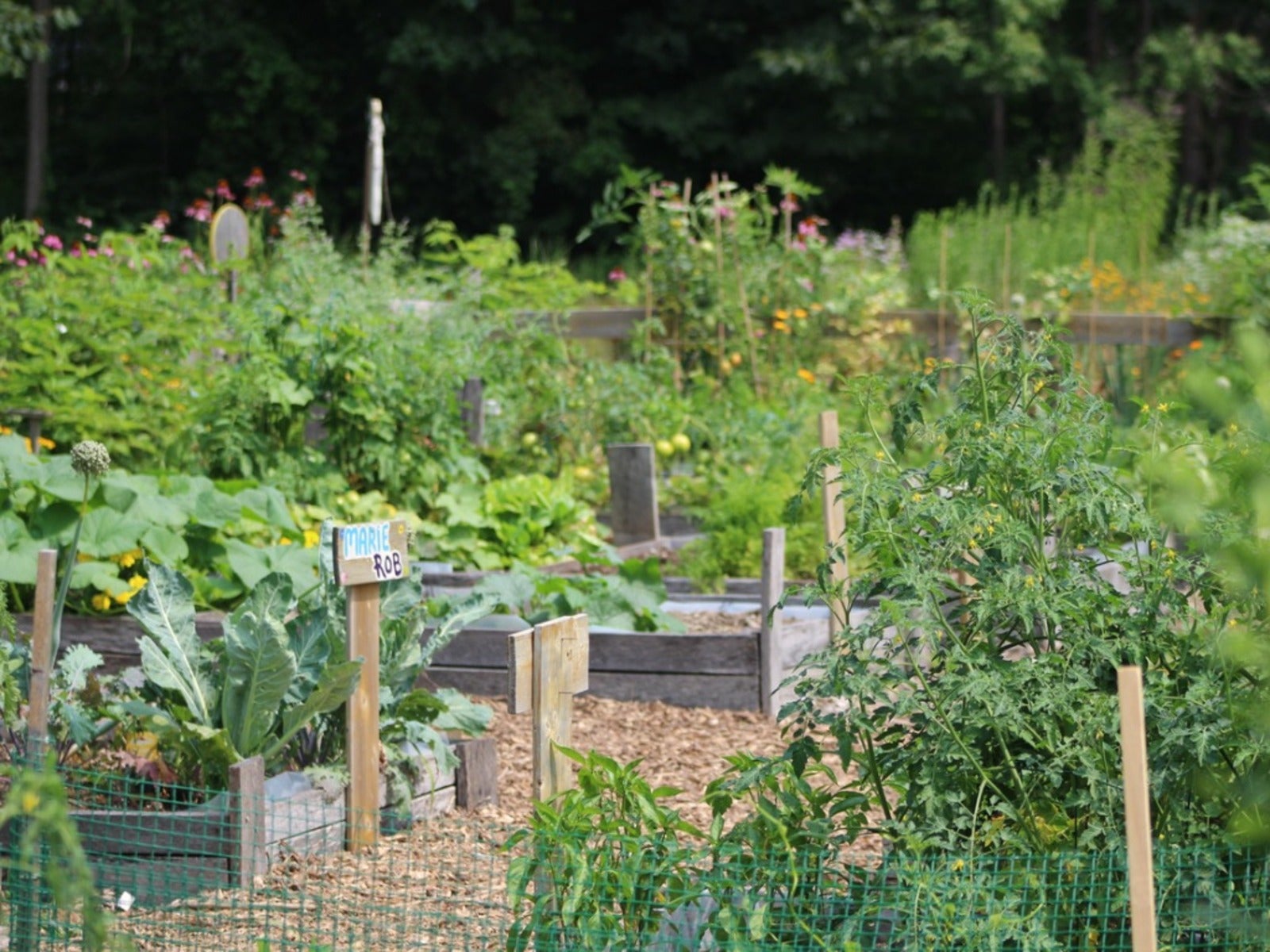
Community gardening is becoming a familiar sight. Some of the benefits of community gardening are aesthetic -- utilizing an otherwise unused and unkempt space and beautifying it. Some are social endeavors that bring a community together with a common goal.
And many community gardens are established in low-income neighborhoods on vacant land spaces where food deserts exist. The benefits of community gardens in low-income neighborhoods can be economic, as well as bringing much-needed fresh food to local residents. Read on to learn more about economic community garden benefits and why you may want to become involved.
About Community Gardens
Nearly 13% of U.S. residents are food insecure. Often food security affects people who are low-income, which means they not only do not have enough resources to purchase food, but places that sell fresh food may be miles away and difficult to get to (food deserts). Often the only options for food in these areas are nutritionally deficient, empty calories from a local gas station or fast food restaurant, leading to unhealthy eating habits and inevitable future health complications.
Food inequity isn’t a new problem. Among the first community gardens were those established in Detroit as a response to the 1893 economic recession. Known as “Pingree’s Potato Patches,” named after the city's mayor, interest waned as soon as the economy picked up and workers were back at jobs earning wages.
There have been other incarnations of community gardening. Victory Gardens of WWI and WWII, as well as grassroots organizations of the 70s were known for communal growing. More recently, community gardening has enjoyed a resurgence as social movements aim to remedy food insecurity.
Benefits of Community Gardens to Residents
The most obvious way that community gardens benefit a community is to bring food to an area and will foster the overall health of its citizens. Also termed urban agriculture in more populated areas, community gardening not only promotes healthful eating, but contributes to the economic development and environmental sustainability of that community.
Many people the US are apartment dwellers who have no access to gardening spaces, like yards or acreage. Participants in community gardens save money by growing and sharing their own food. They have access to a wider variety of foods, they learn how to grow and care for crops sustainably, build social and community bonds across ethnicities, and gain physical and mental health.
Sign up for the Gardening Know How newsletter today and receive a free copy of our e-book "How to Grow Delicious Tomatoes".
How do Community Gardens Benefit Communities?
While there are many benefits of urban gardening to individuals and families within the community, there are also economic benefits that spill over into the rest of the municipality.
The improvement of a vacant lot at little to no cost to the city is of enormous benefit to the city as a whole. The eradication of “eyesore” lots can remove or mitigate litter, loitering, and drug activity, making the area safer, in turn reducing law enforcement costs while providing food and education. The collaboration of various groups to create a safe, productive community garden also brings people together who might not otherwise have a common goal.
Reducing the Carbon Footprint
In the United States, our food travels an average of 1300 miles from production to table. The amount of fossil fuel energy used to produce a single calorie of food bought at the local grocers is huge. Producing food locally at the community garden reduces greenhouse gas emissions used to transport produce.
The lengthy transportation of commercially produced food means that produce is often a week or two from harvest to grocer, meaning that almost 50% is lost to spoilage. The rapid transfer from a local harvest-to-dinner table reduces spoilage, saving money while healthy produce is consumed at its peak.
Urban community gardens reduce waste by encouraging composting, which in turn reduces the cost of municipal waste management. These gardens also help to improve air and water quality for the surrounding area; a long term win/win for the people of the city.
A Multitude of Benefits
Community gardens have been shown to increase property values which in turn increases the city’s tax revenue. Also, many gardens offer a peaceful ambience which often attracts small businesses which, in turn, increases revenue for the area and provides employment opportunities. In addition, community gardens are great venues for volunteerism.
Community gardens are frequently used to provide programming for addiction recovery where life lessons learned in this environment are often the key to successful integration as members of society. Young people who have been court ordered to community service have been known to have life-changing experiences working in these natural spaces.
Other groups such as recent immigrants use the garden as a way to meet others, gain support, learn English, experience different foods and make contacts. Still other groups like church members and students benefit from programs at community gardens.
What was once an abandoned lot can now become a community within a community -- an area for the common good where differences are cast aside.
Want to learn more about community gardens that are making a difference? Check out our Community Gardening for Everyone sponsorship page.

Amy Grant has been gardening for 30 years and writing for 15. A professional chef and caterer, Amy's area of expertise is culinary gardening.
